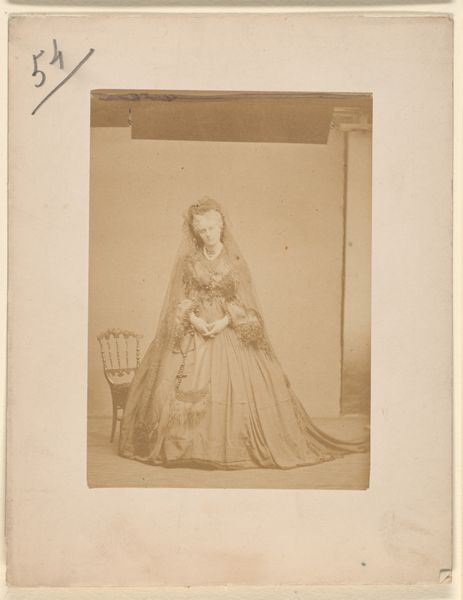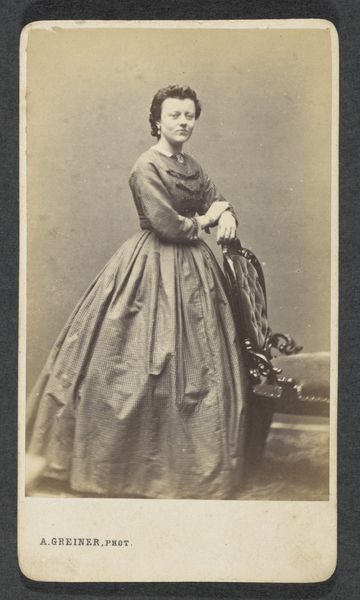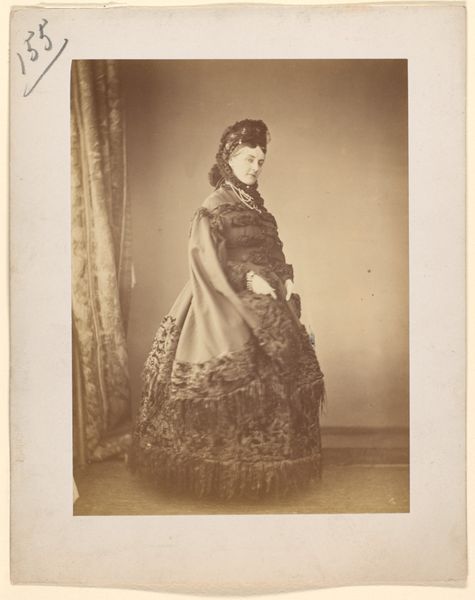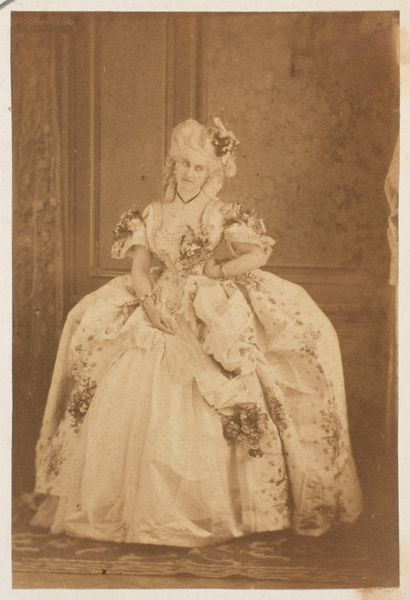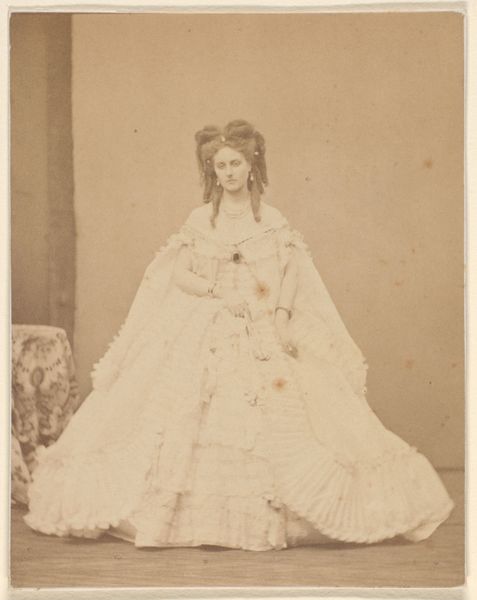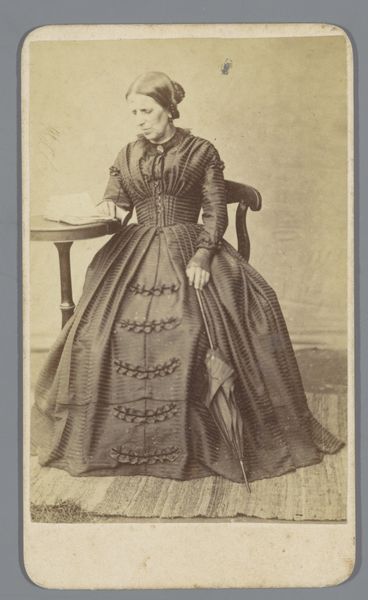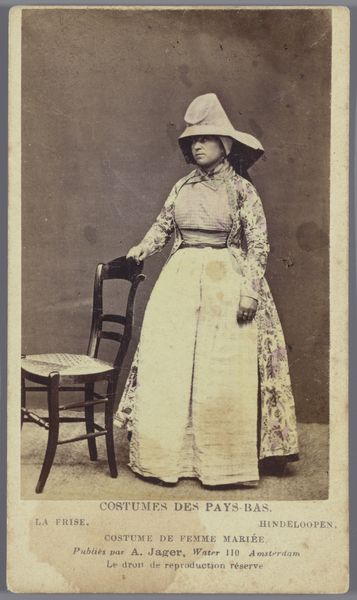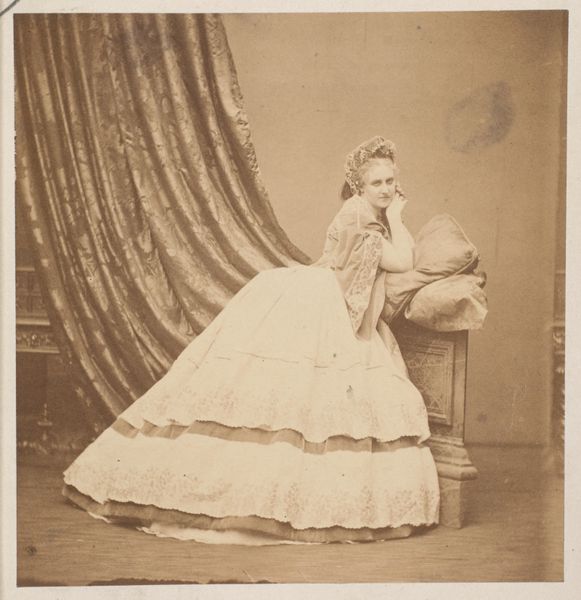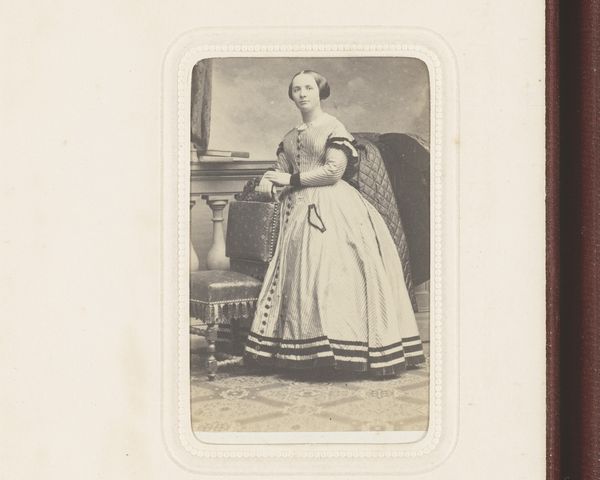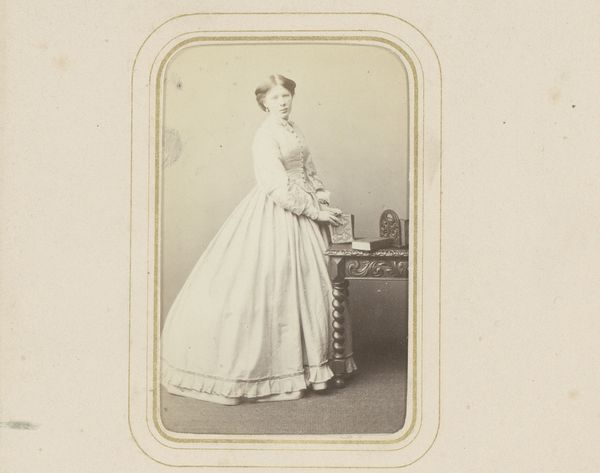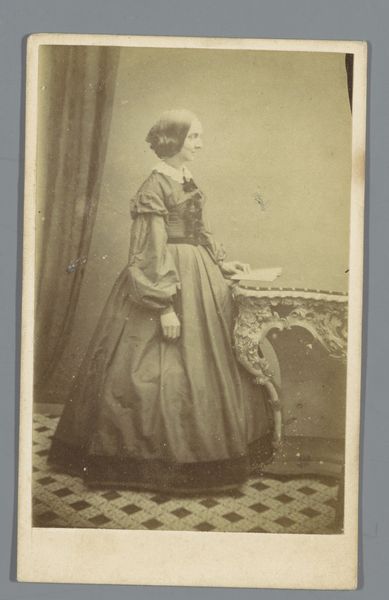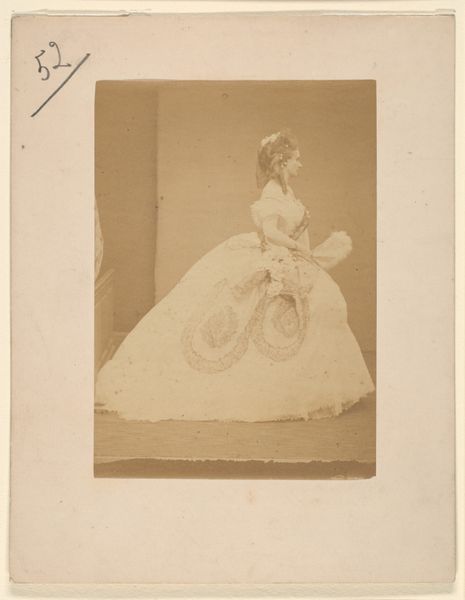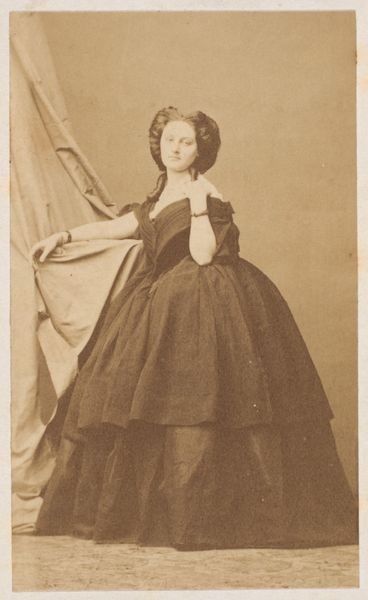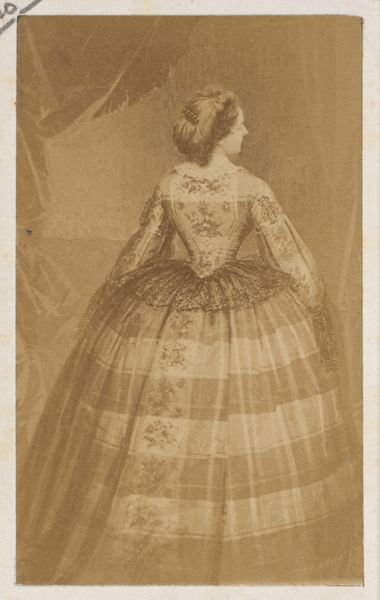
Copyright: Public Domain
Curator: Here we have "Le chapeau à plumes," or "The Feathered Hat," a photographic portrait from the 1860s created by Pierre-Louis Pierson. It's an albumen print, now residing at the Metropolitan Museum of Art. Editor: It’s astonishing, the scale of that gown almost consumes the image. You're drawn to the opulence of it. Is that real lace trimming the edges? Curator: Absolutely. In terms of symbols, feathers often represent status, wealth, and a connection to the divine, especially in this period. A photograph like this projects aspiration and cultivated taste. Note how the stark background directs attention solely toward the figure and her garment. Editor: Right, but the image isn't solely about projecting status, is it? Consider the time and labor involved in such elaborate textiles. That dress would require immense skill and hours from seamstresses. The materiality speaks volumes about industrial practices and class structure. Curator: True. There is also a nod to Romanticism. We observe this through a sentimental vision and idealized beauty – it pulls the viewer into an emotional relationship. Editor: What also strikes me is the photographer’s technique; albumen prints involve a lengthy, demanding process. The preparation of the glass plate, the precise timing—a collaboration, really, between sitter and maker. The photographic technology is itself very physical. Curator: Certainly. The act of creating such an image solidifies its impact, amplifying its message far beyond mere physical appearances. Each element conveys deep meaning. Editor: Indeed, examining the physical processes of art allows a broader scope of labor, time, and material conditions which otherwise get veiled by art history and theory. Curator: A rich encounter, both visually and conceptually. Editor: Agreed, layers of meaning emerge as we look beyond the surface sheen.
Comments
No comments
Be the first to comment and join the conversation on the ultimate creative platform.
